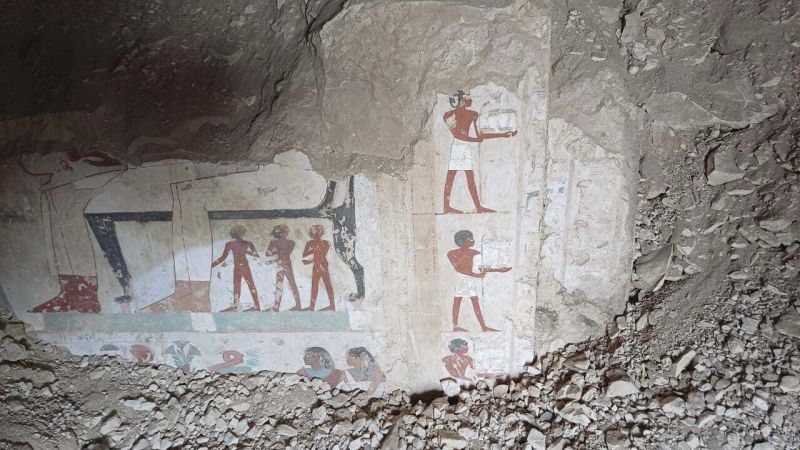In a significant archaeological finding, three ancient tombs have been discovered within an Egyptian burial complex, shedding light on the rich history of the New Kingdom era. These tombs, which date back thousands of years, were found in Luxor, a city renowned for its historical significance and archaeological wealth. The announcement was made by Egypt’s Ministry of Tourism and Antiquities, indicating that this notable discovery happened in the Dra’Abu El Naga necropolis, an essential site for non-royal burials.
The excavation work was entirely performed by Egyptian archaeologists, underscoring a proud moment for the nation’s heritage. Sherif Fathy, the Egyptian Minister of Tourism and Antiquities, emphasized the significance of this discovery on the ministry’s Instagram, calling it a “remarkable” contribution to the archaeological record of Egypt. The statement marked a celebration of Egyptian expertise in uncovering their ancient past.
Inscriptions found within the tombs provided crucial information about their owners, according to Mohamed Ismail Khaled, the secretary-general of Egypt’s Supreme Council of Antiquities. These inscriptions were vital for identifying the names and titles of the tomb’s occupants. However, Khaled noted that further investigations and cleaning of the inscriptions are necessary to obtain a complete understanding of the historical context surrounding each tomb.
Among the tombs, one belonged to Amun-em-Ipet, an individual from the Ramesside period, specifically during the 19th and 20th dynasties, who seems to have served either in a temple or the estate dedicated to Amun, the chief god of the Egyptian pantheon. While much of the decorative artwork within his tomb has been destroyed, notable scenes depicting furniture carriers and a banquet event remained intact, providing insights into the cultural practices of the time.
Another tomb, affiliated with the 18th dynasty, belonged to an individual named Baki, who held the position of granary supervisor. This discovery adds to the understanding of the roles played by various individuals in ancient society, extending our knowledge of the administrative and social frameworks that existed in Egypt. The third tomb, also from the 18th dynasty, was identified as belonging to a person named Es. His multifaceted roles included serving as a supervisor in the Temple of Amun, acting as mayor of the northern oases, and working as a scribe, further highlighting the diversity of occupations present in ancient Egyptian society.
The director-general of Luxor antiquities, Abdel Ghaffar Wagdy, led the excavation team and provided descriptions of the tomb layouts. Amun-em-Ipet’s tomb features a small courtyard, an entrance, and a square hall concluding with a niche. Notably, one of the walls was broken, suggesting possible past disturbances or excavations. The tomb of Baki showcased a long, corridor-like courtyard preceding a main entrance, while an extended hall led into another lengthy hall, ending in an incomplete chamber that housed his burial well. Es’s tomb similarly contained a small courtyard with a well, leading to a main entrance and a transverse hall culminating in another incomplete long hall.
The discoveries in Luxor don’t stop here; these tombs represent yet another exciting find in a year already rich in archaeological revelations. Earlier in February, a cooperative Egyptian-British archaeological team uncovered the tomb of King Thutmose II, a discovery described by officials as “remarkable.” This cumulative evidence highlights Luxor’s vital role as a center for archaeological exploration and its potential for revealing further secrets of ancient Egypt.
As excavations continue, the insights garnered from these tombs promise to expand our comprehension of ancient Egyptian life, culture, and beliefs, illustrating a civilization that thrived for millennia and adapted through its immense historical journey. The discoveries not only evoke a sense of wonder but also connect modern Egyptians with their prosperous past, celebrating their rich cultural legacy.



